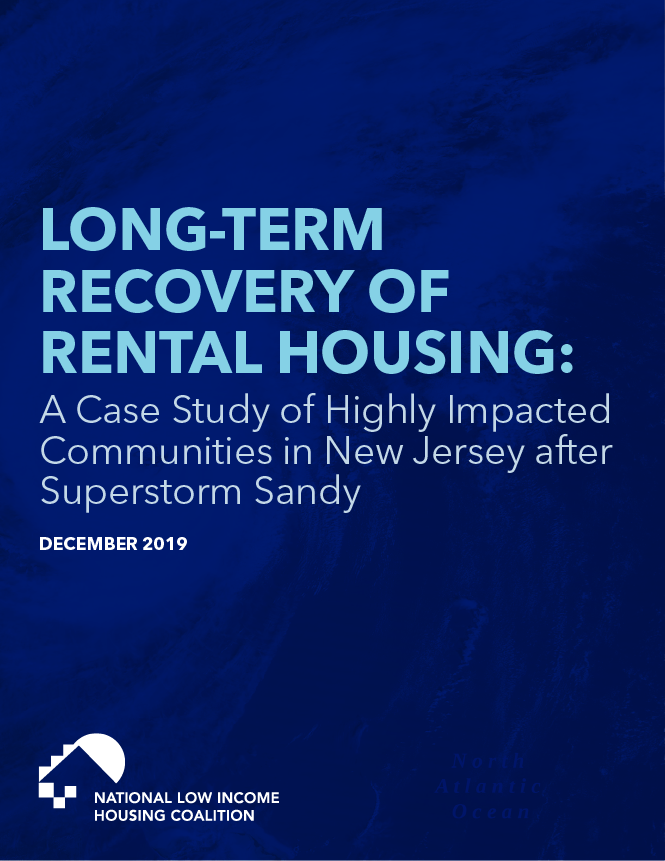NLIHC Releases Report on Long-term Rental Recovery after Superstorm Sandy
Dec 09, 2019
NLIHC released on December 4 a report on the long-term recovery of rental housing after Superstorm Sandy in New Jersey. Based on quantitative data and interviews with key officials, program administrators, and housing advocates, the report highlights the need for post-disaster rental assistance for longer than two years, priority for displaced renters in housing developed or substantially rehabilitated with recovery money, supplemental subsidies for developments that set aside housing for extremely low-income renters, pre-disaster expansion of the subsidized affordable housing supply, and future research on the needs of small-property landlords.
New Jersey, where Sandy made landfall, was particularly hard hit by storm-surge flooding, wind damage, and power outages. The state suffered an estimate $29 billion in damages to personal properties, businesses, and infrastructure. More than 109,000 renters applied for assistance with their housing and other needs from FEMA’s Individuals and Households Program (IHP). Approximately 39,000 renters were approved for assistance. NLIHC’s report examined the recovery of rental housing in Atlantic, Monmouth, and Ocean Counties, three counties most severely impacted by Sandy. Combined, these three counties accounted for 69% of the state’s damaged rental homes and 65% of the state’s renters approved for IHP assistance.
Data from the American Community Survey (ACS) and New Jersey’s property tax assessment system indicate a number of heavily-impacted communities in Monmouth and Ocean Counties lost low-cost rental housing while experiencing significant gentrification among properties damaged by Sandy. In some communities like Beach Haven and Belmar, properties damaged from Sandy tend to have higher tax assessments today than non-damaged properties, because they have been rebuilt into higher-cost housing. Communities like Atlantic City, with a declining local economy, did not face the same challenges. Interviews conducted by the researchers highlighted the long recovery time required for multifamily housing, the limited targeting of recovery funds for renters with the lowest incomes, and potential challenges in recovery for small landlords.
The report, Long-Term Recovery of Rental Housing: A Case Study of Highly Impacted Communities in New Jersey after Superstorm Sandy, is available at: https://bit.ly/2YlRmQm
